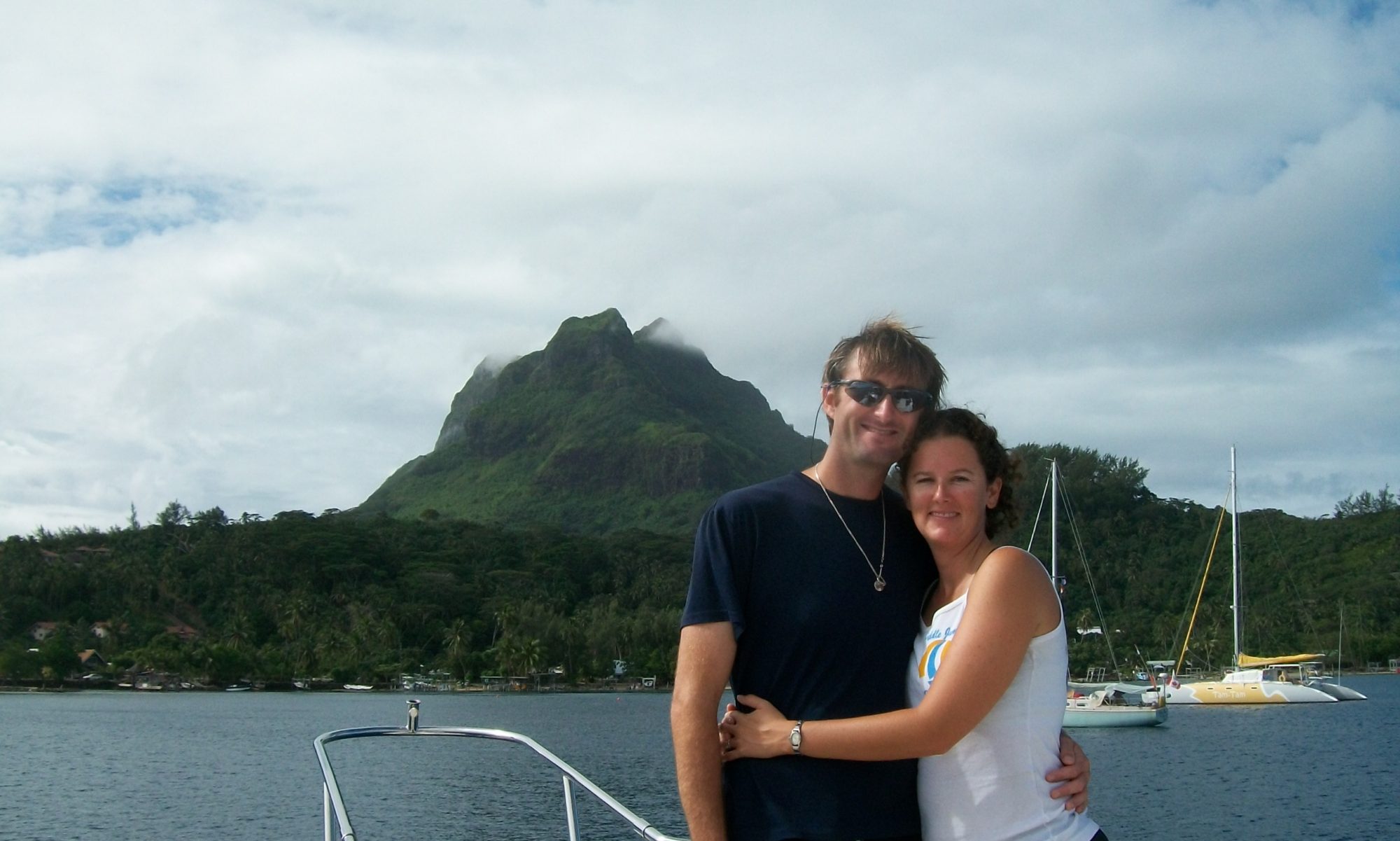Rangiroa, Tuamotu, French Polynesia
Look closely, there’s a spider in this plumeria (frangipani) flower!
There’s a winery on Rangiroa! We’ve been told that it’s the only winery on a coral atoll. The amazing thing is that they’re able to grow anything here at all. Back in the day, the islanders struggled to grow their crops. Plants had to be constantly fed with other food scraps and compost in the hopes that they would grow. Why? There’s no topsoil out here! When you walk around in the “brush” of the island, you’re crunching on shells and coral. Dirt is not native. Sand is, but sand doesn’t contain minerals. Only the extremely hardy plants can survive out here without help, and since when have you heard of grape vines as being extremely hardy? Never, that’s when. Even in California wine country they baby the grapes and make sure they get enough water and protection from the bugs and frost.
**20100527 – photo – Rangiroa (106).JPG**
We’d heard about this place quite a way back in our travels. As we’ve been going, we’re specifically looking for wineries, because, um, we like wine 🙂 The guidebook for French Polynesia mentions it briefly, but we had a hard time believing that there would only be one winery in the entire country of French Polynesia. I mean, come on… they’re FRENCH! And usually where there’s one winery, there are about 50 more. There’s bound to be more, so we’ll be keeping our eyes peeled!
Unfortunately the winery, Vin de Tahiti, was closed for the season when we arrived on Rangiroa (closed for the season!?! We arrived in the middle of the tourist season!?!). We did manage to get a nice guy to open the door for us and to answer a few questions. Here’s their story:
The wine wasn’t spectacular, but it was pretty solid. Definitely drinkable, but not something we’d go out of my way to find. (oh, wait, too late 😉 The most awesome thing about it is that it’s the only Tahitian wine you can get.
The funniest thing about our wine tasting experience was the chicken that kept wandering into the bar. Now, you would think we’d be used to it by now. After months in Mexico hanging around a cat that would steal your drink when you weren’t looking and sailing around a bunch of small islands with free range chicken working the copra industry, we shouldn’t be surprised where they end up! Maybe if the chicken had stayed outside the bar, we wouldn’t have thought it unusual. Heck, the chicken could even have just gone inside the door and we probably wouldn’t have thought twice about it, even though we’re talking lagoon view, individual bungalows, high end hotel here! No, we probably wouldn’t have been too excited about it. But when you’re sitting in the bar of a high end hotel, and a scraggly chicken jumps up onto a table near you and basically orders a cold one, well… you notice it…
What’s your best pet/animal story?





















